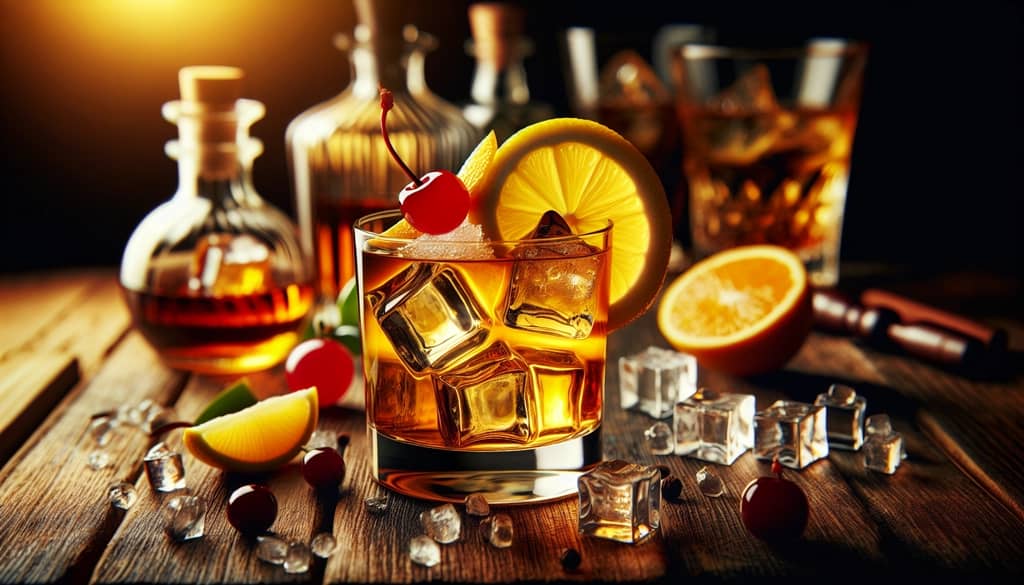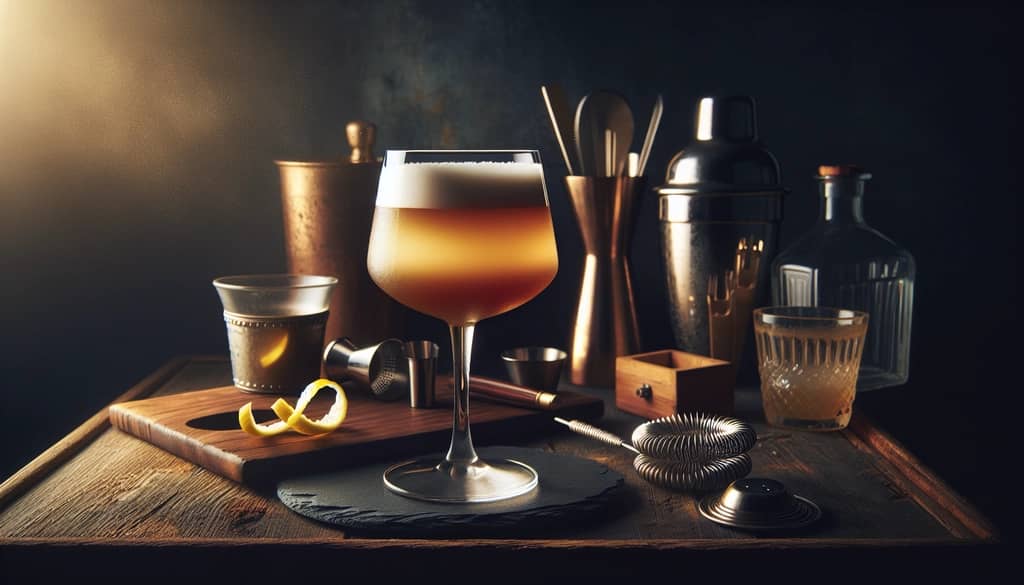Updated on: 6/3/2025
Boston Sour vs. Whiskey Sour: Comparing Two Classic Cocktails

In the world of classic cocktails, the Whiskey Sour has long been a favorite for its perfect balance of sweet and tart flavors. Meanwhile, the Boston Sour, a delightful variation, offers a more sophisticated twist on this beloved drink. For cocktail enthusiasts and amateur bartenders alike, understanding the subtle nuances between these two variations can enhance one's appreciation of mixology.
Fast Facts:
- Whiskey Sour: A classic cocktail made with whiskey, lemon juice, and simple syrup.
- Boston Sour: A version of the Whiskey Sour that includes egg white for a creamier texture.
- Flavor Profile: Boston Sour is often smoother due to its frothy consistency, while the Whiskey Sour is sharper and more straightforward.
- Ingredients: Both drinks mainly use whiskey and lemon juice, but Boston Sour adds egg white.
- Perfect For: Those seeking a more textured drinking experience can explore the Boston Sour, whereas purists may prefer the classic Whiskey Sour.
Introducing the Classics: Whiskey Sour

The Whiskey Sour has been a staple in the cocktail world since the mid-19th century. The traditional recipe calls for a harmonious blend of whiskey, fresh lemon juice, and simple syrup. Its simplicity is part of its charm, offering a tart yet slightly sweet taste that has garnered fans across the globe. A standard Whiskey Sour is served on the rocks, garnished with a maraschino cherry or an orange slice.
Origins of the Boston Sour

The Boston Sour is a sophisticated evolution of the classic Whiskey Sour. What truly distinguishes the Boston Sour is the addition of raw egg white. This ingredient not only alters the texture, creating a creamy, frothy top layer but also softens the overall flavor profile. The result is a drink that feels richer on the palate and smoother to sip.
Key Differences in Flavor and Composition
- Flavor and Texture: While the Whiskey Sour offers a direct, crisp experience dominated by citrus and whiskey, the Boston Sour's egg white adds a velvety froth, which mellows the tartness and enhances the drink's mouthfeel.
- Ingredients and Preparation: Both cocktails share whiskey and lemon juice as their foundational ingredients. However, the Boston Sour requires an additional step of dry-shaking the ingredients (shaking them without ice) to properly incorporate the egg white and create the desired frothy texture before adding ice for a final shake.
- Serving Style: The classic Whiskey Sour is served over ice, maintaining the cocktail's briskness. In contrast, the Boston Sour is typically strained into a chilled glass without ice, showcasing its creamy top.
Popular Whiskey Choices and Variations
For both drinks, whiskey choice greatly influences the final flavor profile. Common selections include:
- Bourbon: Provides a sweeter, caramelized undertone.
- Rye: Offers a spicier, more robust character.
Experimenting with these whiskey varieties can tailor each cocktail to personal taste preferences.
Why Choose Boston Sour Over Whiskey Sour?
The Boston Sour appeals to those who enjoy a rich, textured beverage with a subtle intersection of flavors. Its frothy top and creamy consistency offer a unique drinking experience that's particularly appealing in upscale settings or for those looking to experiment with classic cocktail recipes.
Perfect Pairings and Tips:
- Boston Sour Pairing: Complements dishes with rich, fatty flavors, such as smoked meats or creamy cheeses, due to its smooth texture.
- Whiskey Sour Pairing: Ideal alongside spicy or savory snacks that match its crispness.
Final Thoughts on These Classic Cocktails
Both the Whiskey Sour and Boston Sour hold esteemed places in mixology. While the Whiskey Sour continues to captivate with its simplicity and classic taste, the Boston Sour offers a creamy twist that's worth exploring. For those interested in delving deeper into cocktail making, trying both will not only sharpen your skills but also expand your appreciation for the subtle art of crafting drinks.
Next time you're at a bar or hosting a cocktail night, why not try both of these cocktails? Discover which style suits your palate best or simply enjoy the delightful variation that each has to offer. Cheers to uncovering new layers within classic flavors!